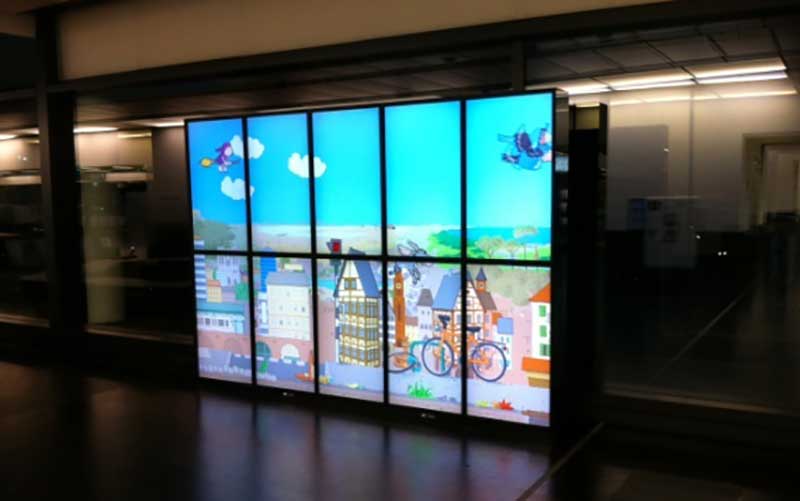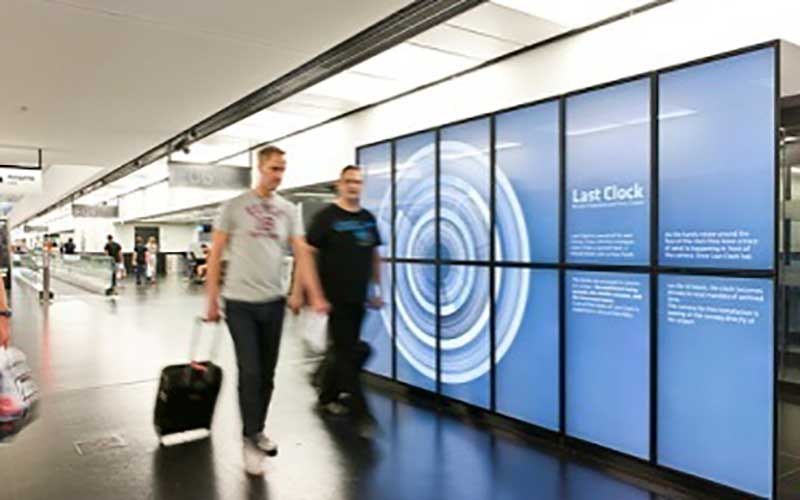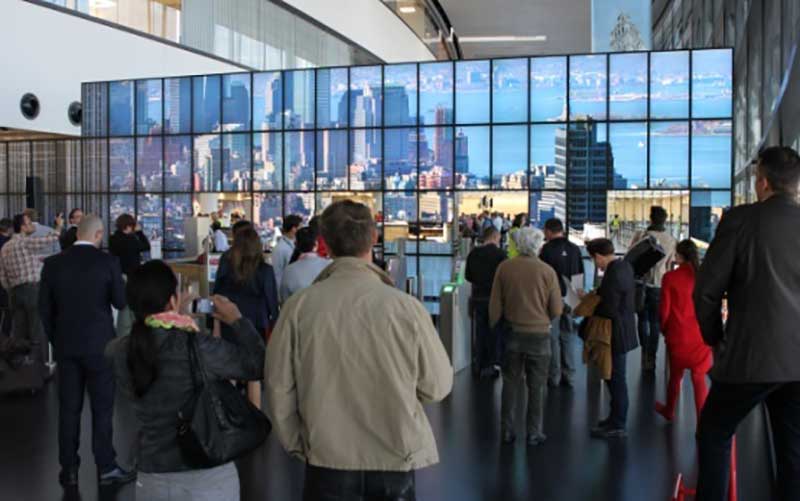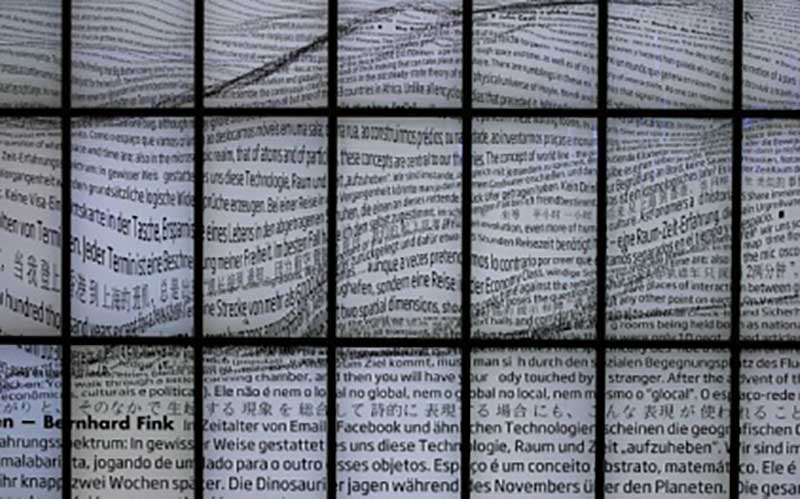Vienna Airport
Vienna airport brings art installations to international passengers by the use of Draco vario extenders
The Project

ZeitRaum (TimeSpace) is an interactive art installation designed for the new terminal at Vienna International Airport by the Ars Electronica Futurelab. ZeitRaum consists of a series of stations that accompany departing passengers on their way to their gates.
Travelers’ initial encounter with ZeitRaum is in the check-in area, where an imposing wall of 78, 46“ monitor screens forms a wall 5 metres high, straddling the entrances leading to the security hall.
At times, a cloud of letters cascades down this wall. Once they come to rest at the bottom, these letters coalesce into texts that, in turn, form the topography of a landscape. Hills and valleys of letters take shape forming well known phrases, all of them incessantly in motion because their growth is a function of current arrivals and departures.
At other times, the wall shows ultra-high definition videos of popular locations around the world, enticing and exciting travelers in their journeys.
Beyond the entrances a massive wall of 87 monitors repeats the effect, this time with letters descending down an even greater distance from the ceiling of the cavernous security area.
A further series of ten more artworks accompany passengers as they make their way along the concourse to the gates, each artwork comprising 12 NEC public display panels, again using 46“ public displays. These displays include sensors that respond to viewers, allowing interaction between passengers and display, further enhancing their appeal and offering greater opportunities for creative design.
“Industrious Clock” is a digital chronograph by Yugo Nakamura (JP). Like a conventional timepiece, its numbers change by the second, minute and hour, but in this case they’re drawn by hand, erased, redrawn and erased once again.
“Last Clock” by Jussi Ängeslevä and Ross Cooper arranges footage shot live at Vienna International Airport into three concentric rings–the innermost updated hourly, the middle one by the minute, and the outer one second by second.
An interactive screen uses two video cameras to allow children to enter a cartoon world and affect the birds, witches, bees, frogs, whales, donkeys and cyclists within the image. The participant enters the scene and their own image moves with their movements.
Serving half the time as an active art installation the extensive series of displays will be used for the remaining time by the airport authority as a revenue-generating advertising medium.
The Solution
In order to ensure security of equipment and to limit the space required within the passenger areas of the terminal, the control and graphic generation computers for all of the 150 displays in the security checkpoint hall are located in the server room over 120 meters away. Distribution of video signals over these long distances is provided by IHSE KVM Draco vario extenders, connected using Cat X cable. These provide the superb image quality and smooth playback of HD video signals from DVI sources at up to 1900 x 1200 pixel resolution and return of HID and USB 2.0 signals from the video cameras.
The 10 satellite installations are further away: up to 800 meters from the server room. Here single-mode fiber is used with CWDM splitters to reduce the number of fiber optic cables. Again, Draco vario extenders were used to distribute video signals and return data from the interactive sensors and cameras.
To save on fiber cabling CWDM Mux/Demux units enable four video outputs to be multiplexed onto one single-mode fiber cable, transmitted across the airport and then demultiplexed to the four original signals, thereby reducing the overall cable fiber requirement by a factor of four.
All source computers were located in the server rooms, with the Draco vario extenders housed in 6-slot enclosures for ease of access, cabling and tidiness.





